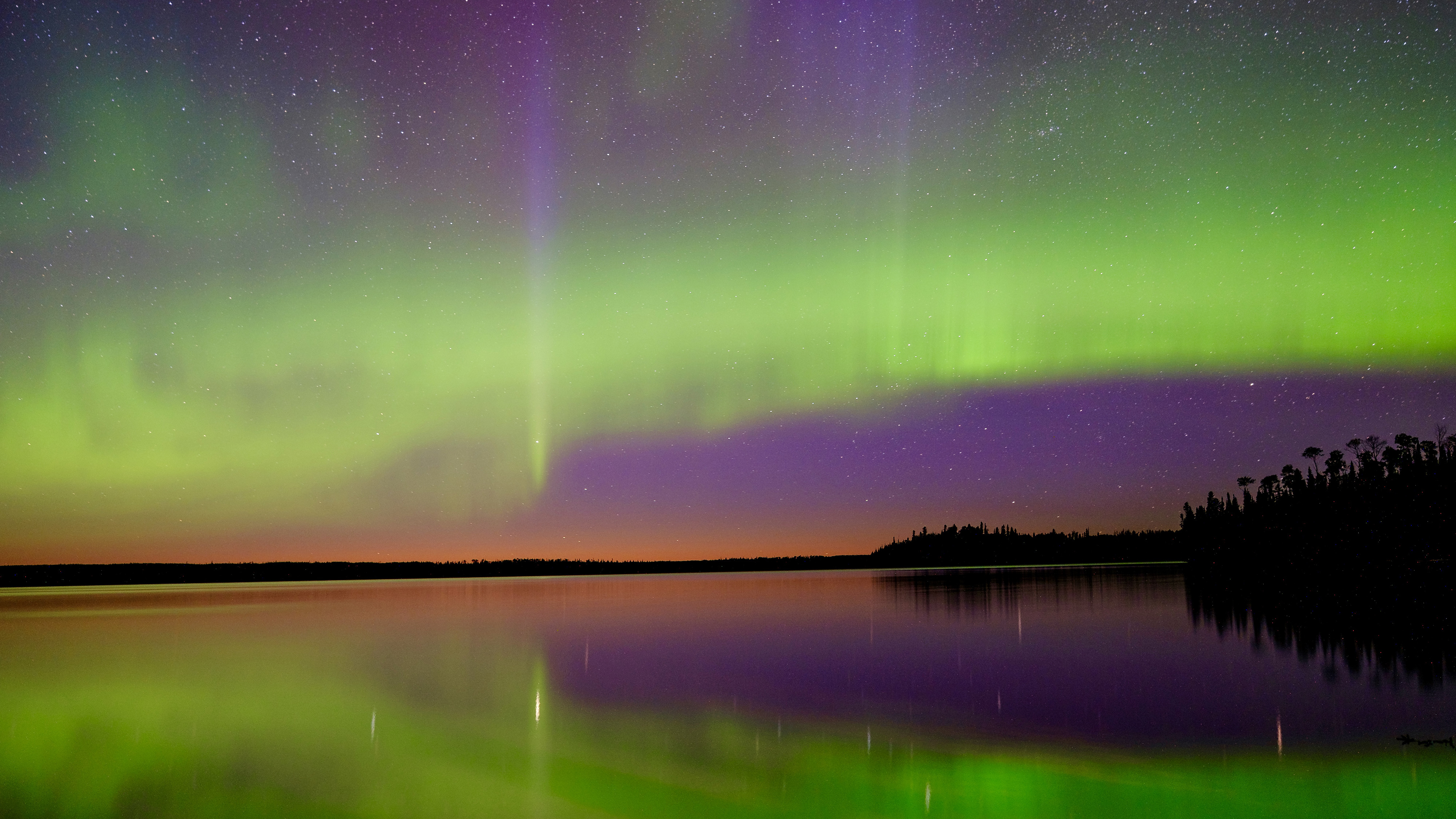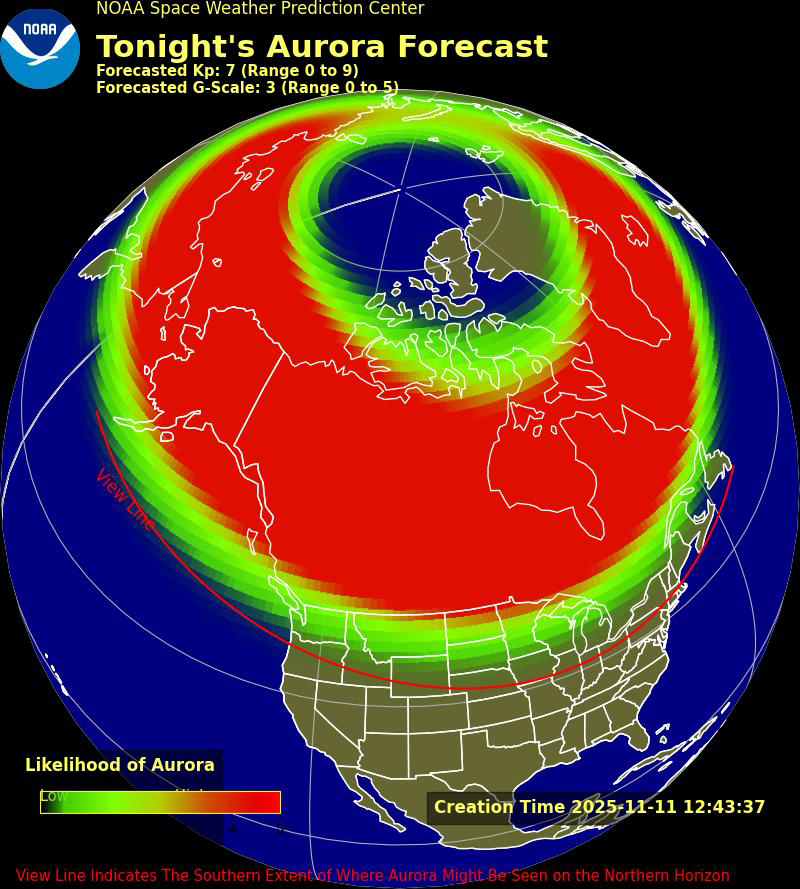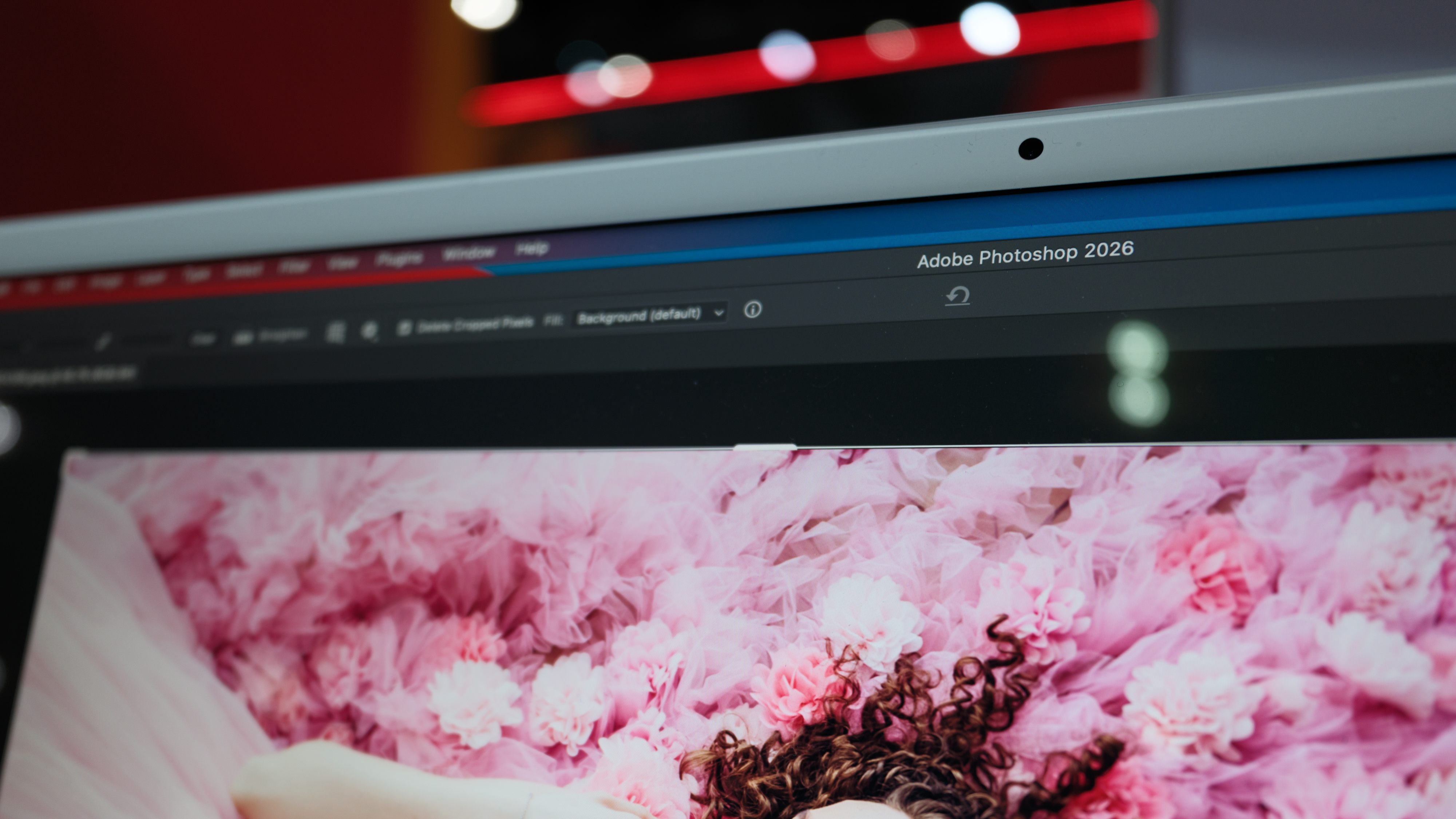Grab your camera – the aurora forecast has just been upgraded to a strong KP7 that could be seen across several states TONIGHT
Solar activity could bring potential aurora opportunities overnight on November 11 and into the early morning hours of November 12

Last week, an unexpected solar storm brought a Northern Lights show to photographers in northern latitudes. But, if you missed last week’s show, you could have another chance as the sun acts up (again), increasing the possibility of seeing the aurora tonight, November 11, and into the early morning hours of November 12.
A coronal mass ejection is expected to impact Earth between Nov. 11-12, according to forecasts from the National Oceanic and Atmospheric Administration (NOAA) and the Met Office. While originally predicted as a G2 storm, the forecast has been upgraded to a G3 with KP levels as high as 7.33.
That could intensify the aurora and increase the odds of potential sightings at lower latitudes. A KP7 indicates an Active Aurora, an upgrade from earlier predictions that estimated a KP5 or moderate Aurora.
In the US, upgrading the storm to a G3 could make it possible to see the aurora beyond the northernmost states. A G3 storm could potentially be visible as far south as states like Nebraska, Iowa, and northern Ohio. The storm is predicted to hit its strongest levels between 10 PM and 1 AM EST. A lower G2-level storm is predicted for 1 AM to 4 AM EST or 10 PM PT, indicating the northern part of the West Coast could also have a potential aurora after dark.

The MET Center similarly predicts that some of the northern UK may be able to spot the aurora tonight. The timeframe with the highest probability of spotting the aurora in the UK is between 9PM and midnight GMT.
While solar activity increases the odds of seeing the Northern Lights tonight, conditions have to line up just right, and spotting the lights is never a sure thing. First, the solar activity needs to reach Earth during darkness. The shortening days as we come closer to the Winter Solstice help.
Darkness isn’t the only condition necessary to see the aurora. The clouds need to clear out in time as well, and the aurora is easiest to spot away from light pollution and with an unobstructed view to the north.
The best camera deals, reviews, product advice, and unmissable photography news, direct to your inbox!
NOAA’s 30-minute aurora forecast tends to be far more accurate than the 3-day predictions, so while the three-day forecast hints photographers may want to get their batteries charged, checking the 30-minute forecast offers a better indication of how accurate those early predictions were before heading out.
You may also like
Learn how to photograph the northern lights before the solar storm hits. Or, if the lights don't make an appearance but the skies are clear, you can still photograph the stars. You can also browse more astrophotography opportunities for November 2025.

With more than a decade of experience writing about cameras and technology, Hillary K. Grigonis leads the US coverage for Digital Camera World. Her work has appeared in Business Insider, Digital Trends, Pocket-lint, Rangefinder, The Phoblographer, and more. Her wedding and portrait photography favors a journalistic style. She’s a former Nikon shooter and a current Fujifilm user, but has tested a wide range of cameras and lenses across multiple brands. Hillary is also a licensed drone pilot.
You must confirm your public display name before commenting
Please logout and then login again, you will then be prompted to enter your display name.
